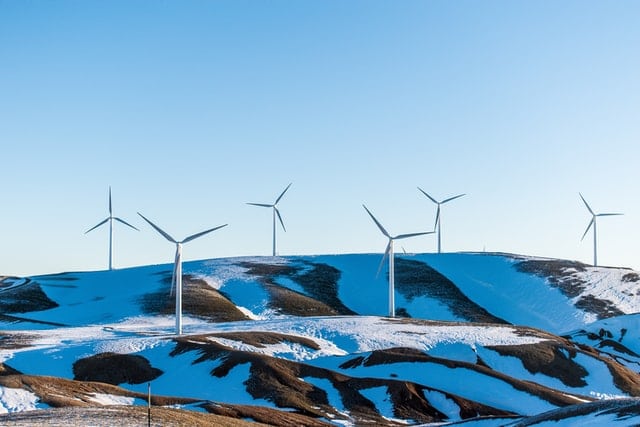Renewable energy is currently one of the hottest topics on the global agenda. With the grim conclusions from the State of the Global Climate 2021 published by the WMO last week, and the IPCC report from March, it is clear that world leaders and decisions makers need collaborate, share expertise, and address complex nexus issues for urgent action. In June 2022, the conference Stockholm+50 is held to accelerate a transformation that leads to sustainable and green economies. Accelerating the growth of green economies includes investing more heavily in renewable energy.
With the newest research and development, the term renewable energy includes many types of energy. Below are some of the trendiest energies that take up a lot of space in climate discussions.
Hydroelectric energy

Hydroelectric energy, also called hydroelectricity or hydropower, uses water in motion, e.g. water flowing over a waterfall, to generate electricity. Generators driven by turbines convert potential energy from the water into mechanical energy. In the early 21st century, hydroelectric power was the most widely utilized form of renewable energy; in 2019 it accounted for more than 18 percent of the world’s total power generation capacity. Hydropower is a very reliable energy source. Unlike wind and solar power, this energy type is not dependent on the weather, and the water has a constant steady flow. While there are a lot of advantages, the environmental impact, especially on the marine life, can be quite serious.
Biomass

Biomass is another type of renewable energy derived from organic material, e.g. plant waste and animal waste, to produce heat or electricity. A great of advantage of biomass is that its sustainability: organic material is indefinite and there will always be a manure, garbage, and wood. Either the material gets burnt to create heat to generate steam, which afterwards goes through a turbine system to create electricity. Or the biomass gets converted into a liquid fuel, which can be reburned to make energy that can run many forms of transport.
Hydrogen

Green hydrogen is a clean fuel that only produces water when consumed. It is produced by electrolysis of water by using electricity from a variety of sources such as nuclear power, biomass, natural gas, solar and wind power. This makes it an extremely attractive option for fuel for e.g. transportation. At the moment, hydrogen plays a small role in the global energy supply, but it is expected to play a bigger role, especially in relation to transport, heating and energy storage. Hydrogen is an innovative solution to achieving carbon neutrality and other climate targets. Therefore, UNECE has created a Task Force on Hydrogen that will advise the Committee on Sustainable Energy on how to help countries meet their international commitments in decarbonizing energy systems by harnessing hydrogen and other decarbonized gases.
Wind

Wind is used to produce electricity by using turbines onshore and offshore. An advantage of wind energy is that it is a domestic source of energy, which means that, in theory, with the right equipment, all countries can generate electricity. The newest trend within wind energy is floating wind turbines, which permits countries unable to have offshore wind turbines due to deep waters a chance to enter the market of wind. Especially offshore wind (including floating wind turbines) is fast growing and has been around for many years – the first offshore wind park erected in 1991 in Denmark. China, the US and India are the countries with the most wind power (2019). A disadvantage of wind turbines is noise pollution and the environmental impact on the local fauna.
Geothermal energy

Geothermal energy is taken from the Earth’s core and comes from heat. The heat is generated during the original formation of the planet and the radioactive decay of materials. Even though it is a renewable source, it is still largely untapped. Like biomass, geothermal energy is quite sustainable and reliable. However, it is location specific, meaning that some areas are not able to exploit geothermal energy. If a country has places accessible to building a plant, it can push the development and economy of the country. E.g. in Kenya, the power plant, Olkaria, is a geothermal investment project built to reduce the country’s reliance on hydropower.
The theme of the meeting is “Stockholm+50: a healthy planet for the prosperity of all – our responsibility, our opportunity”. Stockholm+50 will raise awareness about the importance of protecting our planet. For more information on the conference, see here:
Frequently Asked Questions | Stockholm+50
Green economy: a path towards development and poverty eradication (unric.org)
Blue Economy: oceans as the next great economic frontier (unric.org)

